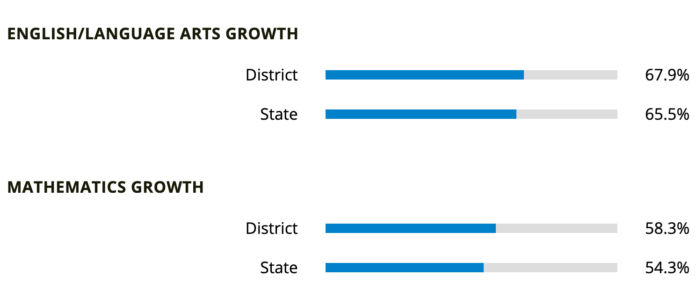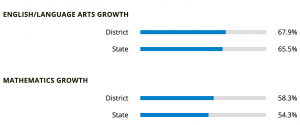
Three BCSD schools earn ‘Top Performer’ marks
By Eric Valentine

How well Blaine County School District is using its resources to improve student performance is under scrutiny this week thanks to the state’s recent release of the so-called school report cards—a compilation of academic and non-academic performance and demographics data aimed at helping school districts focus on what’s being done well and what’s not.
Depending on who you ask and what’s being focused on, BCSD schools are either struggling or outperforming their Idaho counterparts. What follows are some general takeaways from the full report and what key stakeholders are saying about them.
Data Dive
A positive metric that stands out for BCSD administrators, spokesperson Heather Crocker said, has to do with the progress of English Language Learners (ELL) and Hispanic students. The new data indicates that BCSD is gaining some traction in closing the student achievement gap that exists for particular populations of students. New practices like co-teaching and explicit instruction in reading and math, Crocker said, are some of the reasons for the improvements.
Specifically, English Language Learners in Blaine County are outperforming their statewide counterparts in English proficiency. However, only 6.7 percent are proficient in English, a slight improvement over 2018 when only 5.6 percent of ELL kids were considered proficient. English language proficiency is considered to be the level of knowledge and skill with the English language required for academic success.
One indicator seeming counterintuitive—or indicating a significant program issue—involves college readiness. Only 30 percent of BCSD students are considered prepared to succeed at the university level. It’s not much better across the state, but with nearly 98 percent of students participating in the college readiness courses and programs offered around the district, stakeholders may be taking more notice.
“There are several significant data points in the report that should concern the Board of Trustees. However, we need more information before jumping to conclusions about the report results and how to best address them,” said Alexis Lindberg, who recently announced her Zone 1 candidacy for a trustee position in the upcoming November election.
“It is clear that teachers are successfully working to improve achievement rates for all students. However, the 30 percent-plus difference between white and Hispanic students is significant, especially after considering that each group displays similar student engagement. As a Trustee, I will continue the District’s work on eliminating this deficiency and raising achievement rates for all our students,” the certified public accountant from Bellevue said.
Non-Academic Data
The full report online dives into far more than the six academic indicators of student performance. There are three so-called non-academic indicators noted in the report cards, too. They are: teacher workforce, student/parent engagement, and financing. The financial data will be released in January.
“I’m concerned with the nearly 13 percent drop in teacher retention; however, many data points have numerous potential causes that require more research. Recent reports of low teacher morale certainly need to be addressed, as teacher satisfaction is critical to the success of our district,” Lindberg said in a statement regarding the survey.
The full report on the district and each school can be found online at idahoschools.org.
